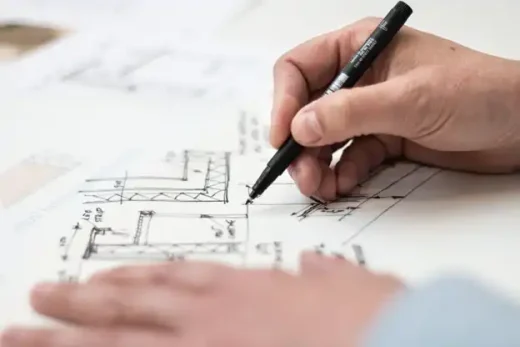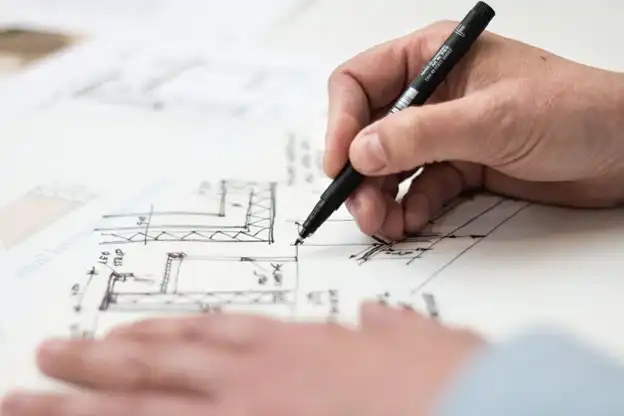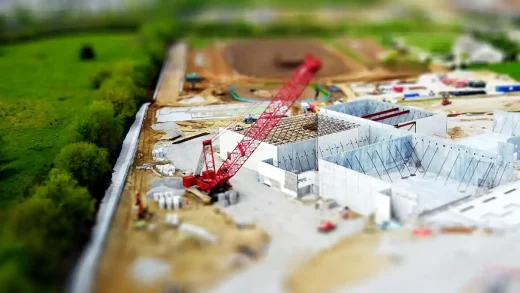7 features revolutionizing architectural design guide, Building interactive signage systems
7 Features Revolutionizing Architectural Design Trends Now
18 November 2024

image by Lex Photography on Pexels
The state of the architectural design is in a complete state of more than just a typical transformation. It is directed by technology that besets forces to drive towards the art of tomorrow as technology comes to divulge superior forms of fine works.
Contemporary architects do not just design buildings but rather redesign spaces to align themselves with sustainability, functionality, and changing human needs.
Here are seven characteristics that influence architectural design trends.
Interactive Signage and Custom Artisanal Options
The ever-growing digital technology arena brought fresh dynamics to architectural design, combining the two divergent ends of utility and aesthetics.
Interactive fixtures like LED displays and interactive signage that you can print on demand Printful can truly turn space into vibrating and immersive experiences.
These digital features can facilitate the adaptability of buildings to occupants’ requirements, maximizing both usage and engagement.
Using digital customizability, architects are experimenting with Point of Design (POD) systems to integrate artisanal expressions in modern structures.
These systems facilitate the seamless integration of decorative panels, unique light fixtures, and personalized art, marrying technology and craft.
Sustainable Materials and Green Building Practices
Architects have started seeking materials and techniques that permit environmental stewardship, and they form the backbone of contemporary architecture.
Cross-laminated timber and hempcrete have stepped in place of traditional materials such as concrete and steel on account of their advantages for sustainability, thermal insulation, and structural integrity.
LEED (Leadership in Energy and Environmental Design) and WELL certifications underpin sustainability standards to encourage energy efficiency and eco-friendly construction.
Green roofs and living walls are now commonplace features. Green roofs improve city biodiversity and, ideally, allow for better air quality. These technologies and passive design principles maximize natural light and ventilation, providing an optimal compromise between architecture and nature.
Parametric and Algorithmic Design
Parametric and algorithmic design tools enter the realm of architecture as formidable rivals in changing architectural form and function.
Architects can produce intricate, optimized designs that respond to specific site conditions, user needs, and material constraints with appropriate software tools. This approach integrates systematic efficiency with stunning structures.
Using computational techniques, the architect would simulate structural stresses, maintaining that entity’s material efficiency and integrity. The result is usually a beautiful blending of artistry with functional precision.
The Heydar Aliyev Center in Azerbaijan is fluid with futuristic curves that show how parametric design enables architects to push the limits of audacity and technicality while remaining relevant.
3D Printing in Construction
3D printing technology redefines architecture practices in faster, more adaptable, and more sustainable construction. Creating detailed components and entire buildings propels an entirely new level of precision and creation. Architects have begun utilizing this technology to produce custom-built furniture, elaborate façades, and structural elements that would otherwise have been unattainable.
Other than its design scope, 3D printing is finding real solutions to numerous grand challenges. It opens a way to develop affordable housing where saving time and reducing resources will directly impact measures to deal with critical housing situations globally.
Smart Building Technologies
Smart technologies are revolutionizing architecture to create responsive buildings that react intelligently to their environment and occupants. This revolution is driven by Internet of Things (IoT) devices and artificial intelligence, powering processes such as automated climate control, energy-efficient lighting, and advanced security systems.
These technologies enhance user comfort through life-cycle lighting, temperature, and acoustics customization to match individual preferences. Smart systems also enhance maintenance efficiency, from wear-and-tear monitoring through embedded sensors to forecasting and preventing problems.
Adaptive and modular design
In our fast-moving world, adaptive and modular design is a pillar of modern architecture, determined by greater utility and economy.
Modular construction is the prefabrication of building components and assembly at a distant location on the construction site. This reduces environmental impact and costs. Such buildings are frequently valuable for housing, schools, or service portfolios.
Adaptive reuse is another trend on the rise, where architects transform outdated buildings into functional, modern spaces. Not only do they retain vestiges from the past, but demolition waste and carbon footprints are also cut down.
Augmented Reality (AR) and Virtual Reality (VR) in Design
Augmented and virtual reality technologies have rekindled and revolutionized the essence of the design process.
Architects, clients, and contractors can view and interact with projects well before construction work starts. AR overlays a digital model onto the existing environment where one can see how a design sits dodged into an already constructed site or urban setting.
However, a virtual reality primer enhances this beyond envisioning a space. All invested parties can engage in the brisk walk-through of a virtual universe that inculcates them into any construction. This pre-construction technology enhances the possibility of faulty design detection, improved spatial planning, and client collaboration.
Endnote
Architecture today is not just building; it is building the new responsive, sustainable universe that responds to the needs of individuals and communities. It could be eco-friendly materials, parametric design, digital customization, or intelligent technology architects redefining what can be.
These trends exemplify how innovation and creativity drive the new architecture era, which merges functionality, aesthetics, and sustainability to lay the foundation for a better future.
Comments on this guide to 7 features revolutionizing architectural design article are welcome.
Construction and Project Management
Construction Posts
Building a Pedestrian Bridge Construction
Make Your Construction Fleet Efficient
5 reasons to use steel in residential construction
Property Articles
Comments / photos for the 7 features revolutionizing architectural design advice page welcome.






